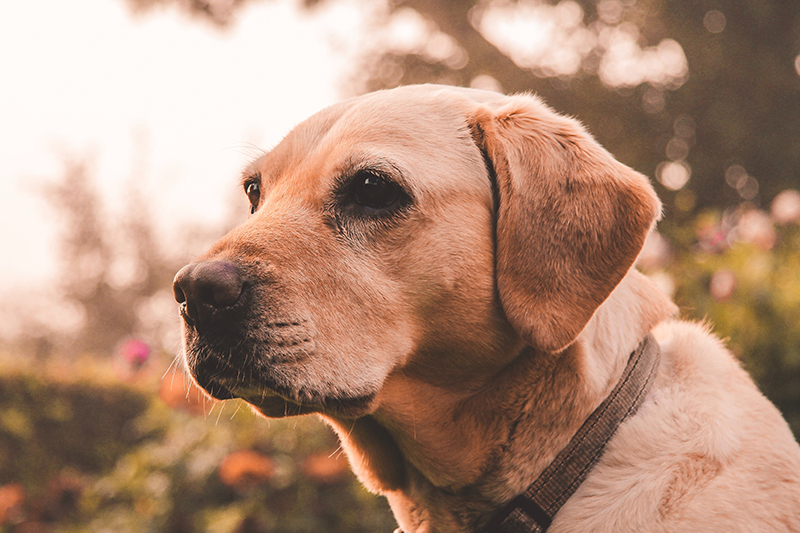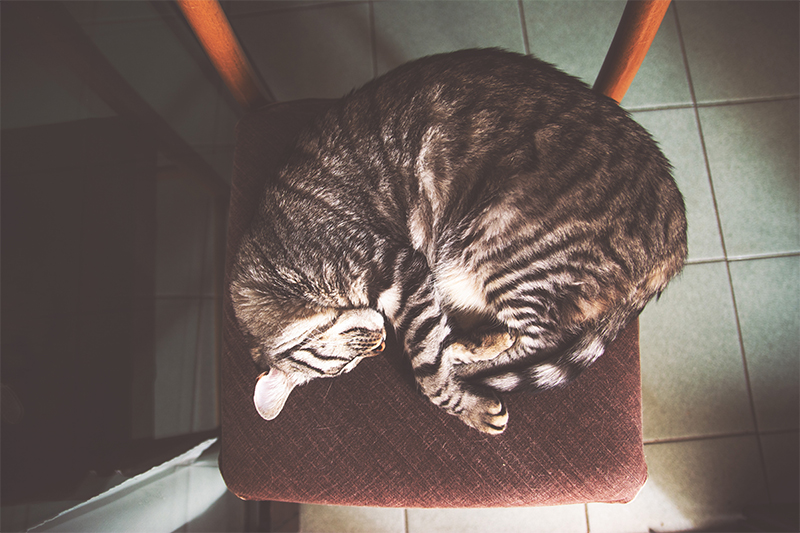Management tips for dogs and cats with OA

Management changes to support your arthritic pet
It is widely recognised that the best way to maximise the quality of life in arthritic pets is via a multimodal approach. There are many changes that you can make to your pet’s lifestyles which may have a huge impact on how they cope with their arthritis. These may include changes to your home set-up or your pet’s exercise and/or feeding regime.
In order to try and keep your arthritic pet as comfortable as possible, you may wish to consider whether the following suggestions could be applicable to you and your pet.
Make adjustments to your home
- Simple home adjustments can make a huge difference to how your dog or cat copes with their OA; without altering the home environment, success of other treatment methods may be limited.
- Ensure your pet has a nice, thick, comfy bed to retreat to when their joints are sore. These should be positioned out of the way of any draughts and in warm parts of the house. (Some dogs will still choose to lie on the hard floor, or cats on the windowsill, but at least we can offer them some comfy options and encourage them to use their beds!)
- If you have hard floors in your house then place rugs/carpets down to help prevent your dog from slipping and sliding when walking around, and to make it easier for them to get up from lying down.
- You may need to consider providing ramps to help them get up or down steps or stairs. Ramps can also provide assistance to larger arthritic dogs when getting into and out of cars.
- Consider providing alternative routes to help your cat reach their favourite high places. E.g. a stool to help them jump on the sofa.
- Check that your dog/cat flap is still appropriate for your arthritic pet.
- It should be big enough for them to fit through without excessively bending their joints and not too high up in the door that they put excessive pressure on their joints when landing. Check the floor either side is not slippery. Mats can be helpful to provide extra grip. Padding on the lower edge can reduce the risk of them bashing their legs as they climb through. The flap may need to be tied open so they don’t have to push it if they are very stiff.
- Ensure your cat’s litter trays remain accessible – consider using litter trays with lowered edges to make it easier for them to enter/exit.
- Ensure they have easy access to their food and water.
Weight management
Weight loss can have a large impact on the quality of life that overweight arthritic animals can achieve. If your dog or cat is carrying extra weight then it is advisable to contact your vet for advice. Many veterinary surgeries run nurse weight clinics to provide you with the support you need for getting that extra weight off your pet. In order to successfully help your pet lose weight you may be required to implement some (or all) of the following:
- A change of diet to a low-fat food may be required to help shed the pounds.
- Weigh out your pet’s food using scales; this is the best method to ensure they are only receiving the calories indicated for their ideal weight.
- Cut out, or at least minimise, treats from their diet; consider using vegetables for dogs as an alternative. Many dogs will enjoy small pieces of carrot, pepper or cucumber.
- Check your pet’s weight regularly to monitor how you are getting on.
- You can use games at mealtimes to make your dog work for their food.

Exercise adaptations
Animals with OA may no longer be able to keep up with their old exercise routine but encouraging activity is essential to prevent the stiffening of joints, weight gain and muscle wastage. It is important to adapt your dog’s exercise regime so as not to exceed their capabilities which could place further stress on their joints and exacerbate the progression of their OA. Your vet will be able to give you advice regarding the amount and type of exercise suitable for your dog but we have also listed some general suggestions below to get you started:
- No ball throwing! The sprinting and quick turning puts a huge amount of pressure on the joints, so this should be avoided.
- Regular controlled exercise is best. Daily short walks tend to be much better to help keep the joints moving than having no walks all week and then going on long weekend walks.
- With arthritic dogs it may not be possible to increase the length or frequency of their walks; however, you may be able to increase their exercise in other ways, such as by taking your dog swimming (hydrotherapy is a great way to introduce controlled swimming sessions) or encouraging very gentle play sessions to get them moving around.
- It is possible to entertain your dog without them having to do large amounts of exercise. Play games which use their brain such as ‘find it’ which they can find very stimulating and will still encourage some movement.
- Think about the terrain which you are walking on. Dogs with OA will find hills, rocky, hard or sandy terrain more difficult than walks on flat soft ground.
- While it is easier to control the exercise of a dog, as we decide when, where and how far they walk, there are also ways in which we can help to support arthritic joints of our feline friends when they are active.
- If your cat commonly climbs fences or trees and insists on doing so despite their OA, consider helping them out by creating easier routes up and down their chosen climbing object. Provide a ladder or intermittent stopping points at various heights.
- If your cat likes to come up to bed with you but is struggling with the stairs, consider carrying them upstairs each night and back down in the morning.
General support
Animals with OA can find ‘everyday’ activities difficult but there are some ways you can help make your dog or cat a little more comfortable:
- Help with grooming them gently and regularly; many animals with OA find it difficult to groom themselves – especially in areas that require more flexibility to reach.
- Ensure their claws are regularly trimmed.
- Trim the fur between their pads to minimise slipping.
- Ensure food and water bowls are easily accessible.
- For large dogs you may need to raise their food and water bowls so that your dog does not have to stretch down to the floor – this is especially helpful for alleviating pressure placed on joints in the front legs.
- If your cat’s bowls need to be kept out of the way of a canine companion, make sure your cat can reach them without having to do any large jumps.
Complementary Therapies
Certain complementary therapies may be of benefit to your arthritic pet, examples include physiotherapy, laser, hydrotherapy and acupuncture. It’s best to discuss these options with your vet so that they can recommend the best option to suit your individual pet.
It is important to be mindful that acute flare-ups do happen in osteoarthritis (even in the most well-managed cases) – these flare-ups may follow episodes of increased exercise, a fall or twist, or periods of cold weather – and can result in your pet feeling significant pain or discomfort. If symptoms are worsening, or you think your pet may be experiencing an acute flare-up, then you need to revisit your vet as soon as possible.
Return to Care for Elderly Pets
News

